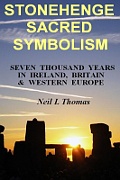<< Text Pages >> Park of the Canals - Ancient Village or Settlement in United States in The Southwest
Submitted by bat400 on Wednesday, 20 June 2007 Page Views: 4364
Multi-periodSite Name: Park of the CanalsCountry: United States
NOTE: This site is 22.408 km away from the location you searched for.
Region: The Southwest Type: Ancient Village or Settlement
Nearest Town: Mesa, Arizona Nearest Village: Mesa, Arizona
Latitude: 33.444389N Longitude: 111.815667W
Condition:
| 5 | Perfect |
| 4 | Almost Perfect |
| 3 | Reasonable but with some damage |
| 2 | Ruined but still recognisable as an ancient site |
| 1 | Pretty much destroyed, possibly visible as crop marks |
| 0 | No data. |
| -1 | Completely destroyed |
| 5 | Superb |
| 4 | Good |
| 3 | Ordinary |
| 2 | Not Good |
| 1 | Awful |
| 0 | No data. |
| 5 | Can be driven to, probably with disabled access |
| 4 | Short walk on a footpath |
| 3 | Requiring a bit more of a walk |
| 2 | A long walk |
| 1 | In the middle of nowhere, a nightmare to find |
| 0 | No data. |
| 5 | co-ordinates taken by GPS or official recorded co-ordinates |
| 4 | co-ordinates scaled from a detailed map |
| 3 | co-ordinates scaled from a bad map |
| 2 | co-ordinates of the nearest village |
| 1 | co-ordinates of the nearest town |
| 0 | no data |
Internal Links:
External Links:
I have visited· I would like to visit
bat400 visited on 1st Jan 2010 - their rating: Cond: 2 Amb: 3 Access: 5
In the area of what is now Phoenix the Hohokam took water from the Salt River. Before the use of modern dams and reservoirs, the Salt River ran year round. In some cases the remains of their canals were reused by European settlers starting in the 1800s. A major, modern canal runs directly by these preserved beds of the ancient canals.
You may be viewing yesterday's version of this page. To see the most up to date information please register for a free account.
Do not use the above information on other web sites or publications without permission of the contributor.
Nearby Images from Flickr






The above images may not be of the site on this page, but were taken nearby. They are loaded from Flickr so please click on them for image credits.
Click here to see more info for this site
Nearby sites
Click here to view sites on an interactive map of the areaKey: Red: member's photo, Blue: 3rd party photo, Yellow: other image, Green: no photo - please go there and take one, Grey: site destroyed
Download sites to:
KML (Google Earth)
GPX (GPS waypoints)
CSV (Garmin/Navman)
CSV (Excel)
To unlock full downloads you need to sign up as a Contributory Member. Otherwise downloads are limited to 50 sites.
Turn off the page maps and other distractions
Nearby sites listing. In the following links * = Image available
3.0km WSW 248° Mesa Grande Ancient Village or Settlement
3.5km SSW 209° Arizona Museum of Natural History* Museum
11.2km W 261° Hayden Butte* Rock Art
11.5km W 266° Loma del Rio Ruins* Ancient Village or Settlement
12.1km W 279° Desert Botanical Gardens* Museum
15.6km W 270° Pueblo Grande* Ancient Village or Settlement
15.6km W 271° Pueblo Grande - Ball Court* Ancient Village or Settlement
15.8km W 269° Pueblo Grande - Park of Four Waters Ancient Village or Settlement
26.3km WSW 247° South Mountain Rock Art
40.6km NW 310° Deer Valley Petroglyph Preserve* Rock Art
47.7km NW 309° Palo Verde Ancient Village or Settlement
56.2km SSE 152° Casa Grande - Ball Court* Ancient Village or Settlement
56.3km SSE 153° Casa Grande - Village* Ancient Village or Settlement
56.3km SSE 153° Casa Grande - The Great House* Ancient Palace
57.1km N 349° Skull Mesa* Ancient Village or Settlement
66.5km WNW 284° White Tank Mountains Petroglyphs* Rock Art
68.9km ENE 71° Tonto National Monument* Ancient Village or Settlement
89.7km N 7° Goat Camp Ruin Ancient Village or Settlement
90.3km NNW 344° Agua Fria National Monument - Badger Springs Wash* Rock Art
92.4km NNW 343° Agua Fria National Monument* Rock Art
93.3km ESE 104° Crow Canyon* Rock Art
110.0km NNE 15° V/V* Rock Art
123.8km WSW 248° Chamber of the Sun* Rock Art
123.9km WSW 248° Painted Rock Petroglyph Site* Rock Art
129.9km N 359° Montezuma Castle* Ancient Village or Settlement
View more nearby sites and additional images






 We would like to know more about this location. Please feel free to add a brief description and any relevant information in your own language.
We would like to know more about this location. Please feel free to add a brief description and any relevant information in your own language. Wir möchten mehr über diese Stätte erfahren. Bitte zögern Sie nicht, eine kurze Beschreibung und relevante Informationen in Deutsch hinzuzufügen.
Wir möchten mehr über diese Stätte erfahren. Bitte zögern Sie nicht, eine kurze Beschreibung und relevante Informationen in Deutsch hinzuzufügen. Nous aimerions en savoir encore un peu sur les lieux. S'il vous plaît n'hesitez pas à ajouter une courte description et tous les renseignements pertinents dans votre propre langue.
Nous aimerions en savoir encore un peu sur les lieux. S'il vous plaît n'hesitez pas à ajouter une courte description et tous les renseignements pertinents dans votre propre langue. Quisieramos informarnos un poco más de las lugares. No dude en añadir una breve descripción y otros datos relevantes en su propio idioma.
Quisieramos informarnos un poco más de las lugares. No dude en añadir una breve descripción y otros datos relevantes en su propio idioma.